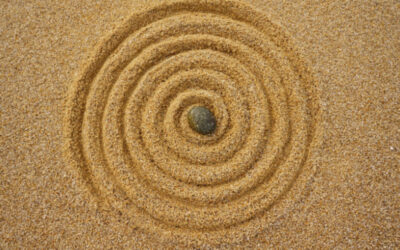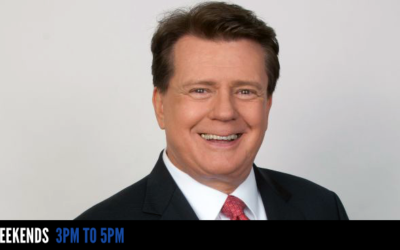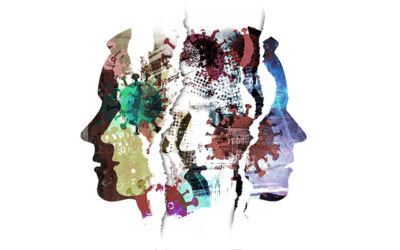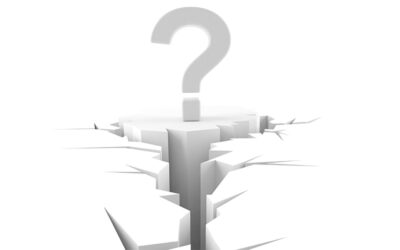Two years ago, while visiting New York City, I was strolling through an exhibit at the Metropolitan Museum of Art titled “Venice and the Islamic World: 828-1797”. The exhibition contained magnificent pottery, silver work, weaponry, and textiles, all laid out in glass cases. As I passed by one of these displays, I noticed a very large book opened somewhere in the middle. It was Avicenna’s “Canon of Medicine”, the most authoritative medical text in the Islamic world at the time. And on the opened page was a picture of a man lying face down on a table and another man standing above him with his hands placed on his back, performing what appeared to be a spinal manipulation. I looked at the descriptive caption on the case. It read, “Doctor performing a spinal manipulation on a patient”. Yes, a spinal manipulation, documented and illustrated, in Persia, approximately 1000 AD.
As I pondered this book, I thought about Chiropractic, my profession. I thought about its frequent characterization as some sort of “new age, renegade” healing method. Yet there it was, a Chiropractic adjustment being administered in the Medieval Islamic world and featured in that worlds most venerable medical text.
In fact, every healing tradition has had some form of this art and science. One can easily imagine that 15,000 years ago, when a member of some small wandering band injured their back, someone would figure out that a manipulation of the joints of the spine, a twisting, pushing, or pulling in some manner, would give relief. Perhaps it would have been understood as the release of a bad spirit held captive in the persons neck which was then set free with the sound of the “crack”. Whatever the explanation, the pain would be relieved. Yes, Chiropractic is ancient. From China, to India, to Iran, to Greece, the practice has been known, utilized, and developed and has continued to be practiced up to the present. The characterization of this ancient art as some sort of modern quackery is simply and factually untrue, a negative perception ultimately rooted in the power struggles between rivals for domination of today’s health care market. Chiropractic now holds a powerful place on the field of Modern Medicine. Yet where should it placed along the spectrum of East to West, of Traditional to Modern?
Eastern Medicine, whether Chinese, Ayurvedic (Indian), or even ancient Greek, is based upon a belief in balance, in the idea that equilibrium is an attainable state and that when we approximate that state we move closer to an ideal of health. When fully in balance, we are fully alive. And the further we stray from that point of equilibrium, the further we are from wellness, until we finally arrive in a state of “disease”. In Chinese Medicine, the practitioner looks at the movement of “chi”, a mysterious substance that flows through channels (meridians) throughout the body. There are places of energetic blockage where the chi becomes stagnant and other areas where flow is hypersaturated, agitated, too robust. The cause of these disruptions might be structural/mechanical, or biochemical/nutritional, or emotional/spiritual. The treatment is the release of the stagnant pools or the cooling of the energetic flux points using acupuncture needles and herbs, exercise and breathing. Ayurvedic, the ancient Indian Medical System, describes a different flow of energy, Prana, which moves through power centers called Chakras. This energy infuses each person in accord with their personality/beings and it is the interaction of these varied forces which determines our state of health. Treatment consists of prescriptive foods, herbs, massage, and/or exercises necessary to restore that deeply desired state of balance. Ancient Greek Medicine was much the same, energetic humours the force they saw moving through the body. (although as a system it was developmentally stunted for various historical reasons—a story for another time!).
These traditional systems contrast greatly with the philosophy, art, and science of Western/Modern Medicine. Born in the Scientific and then Industrial Revolutions, this medicine adopted the worldview of its place and time. The powerful new “scientific method” could be applied to yield great industrial power. It could explain why the world worked in the way it did, why the planets moved in elliptical orbits, why the tides flowed in and out. And the way the world came to be known was through a logic of reduction, the breaking down of complex processes by which things function, to their fundamentals, extracting the most basic descriptions and translating them mathematically. It is this breakdown that has come to define our worldview, a slicing of reality to its core and the reconstruction of the world out of rearranged fundamental bytes.
So it was natural that the medicine which grew from this perspective would be reductionistic and mechanical and that the explanation of disease would be singular and basic. Germ Theory fit perfectly—the reduction of disease to microbes, unicellular and viral. The treatment–pharmaceutical bullets aimed at the heart of these microbial invaders. And it also followed that the diagnostic tools and therapeutic modalities would be wonders of industrial technology—MRI’s, CT Scans, lasers—each generation of machine able to probe human matter more deeply, visualizing muscles, tendons, bones and organs, even our very genetic structures, searching and finding under the gaze of these powerful microscopes the singular cause of our ailments.
East and West, Traditional and Modern, two ways of knowing, two ways of treating. One seeking harmony of the whole. nudging the organism with herbs, metal pins, food, massage, and exercise, the other in search of a root cause, ready to excise the toxic offender with miraculous chemical and mechanical weaponry. Both methods powerful and both with the same intention—defeating disease and the creation/restoration of good health.
So what is the art and science of Chiropractic? Is it like medicine which attempts to locate and identify the germ responsible for a particular illness, except that in the case of Chiropractic, the practitioner tries to locate the one vertebrae which is “out of place”, causing the patients problems? Some Chiropractors would say yes. But Chiropractic is really much more, much bigger. It is a healing science based upon an understanding of structural balance, upon an analysis of postural distortions, hypertonic musculature, weakened core structures, hypomobile joint articulations, and an understanding of the problematic physiological consequences of such phenomena. It is rooted in a questioning of why these imbalances exist, and explores the emotional, chemical, and physical stresses that have morphed into somatic dysfunction. Treatment follows naturally. If muscles are tight, they are loosened with a variety of soft tissue techniques, if they are weak, appropriate exercises are prescribed. If joints are not moving, they are moved, adjusted to restore motion. If the bodies core is unstable, the core is strengthened, trained mechanically and neurologically. And if life at a computer screen for eight hours each day is causing constant back pain, one must look at these physical and psychological manifestations and explore root causes. It is about pain and it’s meaning. About our pain as narrative.
Yes, treatment is a manipulation of the spine, but that stuck spinal segment is simply a fulcrum around which the individuals life moves, their suffering a natural consequence of a life out of balance. And while the adjustment might cause a reflex relaxation of the surrounding musculature, increased blood and lymphatic flow, and a release of compressive forces pressuring nerves, it also, through these physiological responses, allows the body to move toward its balance point. In this new era of Integrative Medicine, Chiropractic stands uniquely as a practice based on principles rooted in both scientific reductionism and traditional theories of equilibrium. Its theory and practice represents a way to more deeply integrate the varied philosophical views and treatment modalities that span the healing arts spectrum, a bridge between East and West, between Traditional and Modern Medical Science.
[email protected] www.rickyfishman.com












Your information is so great. But in my country, chiropractics has not been yet famous. Thx for posting it..
Thanks so much for your comment. I am wondering what country you are writing from as I am always interested in knowing what the state of Chiropractic care is in other parts of the world.
Love it! Thank you for bringing a whole new appreciation for the amazing art of chiropractic. I so often take it for granted so it was fun to revel in your story of history and awe of the art.
When discussing comparisons between East/West and Ancient/Modern medicines, I must admit I have a difficult time giving much respect to ancient medicines because of longstanding prejudices I’ve developed with regard to ‘mystical’ properties attributed to some therapies. As an example, there is a tremendous black-market for rhinoceros horn in Asia because of a perceived medicinal benefit for impotence. There are other like examples in traditional medicines that I find to be painfully ridiculous. Beautiful and rare animals are slaughtered for their livers or other internal organs because of the perceived nobility, strength or virility of the animal, and somehow the recipient is to inherit that property from ingesting it. Now I’m not lumping chiropractic in with that type of thing, but I think a dose of skepticism is “healthy’ when looking at any mode of therapy. I definitely believe Western medicine needs a lot more skepticism applied, despite all of the FDA testing and scrutiny. To your point, I think that it would be far better if the efficacy of all medicines and treatment modalities were scrutinized. The continued practice of a particular type of medicine can be indicative of it’s ability to relieve disease, but the longevity of that practice alone isn’t enough establish credibility. With any treatment, it’s important to establish a cause and effect relationship in a rational way so that a clear understanding of what the disease is established and then an appropriate treatment is prescribed. Far too many practitioners of traditional medicine make far-reaching claims for their methods that seem to be built more on faith and legends than repeatable experiences. While I am a whole-hearted advocate for regular chiropractic care, I don’t think a spinal manipulation is going to resolve a bacterial infection on your skin or treat someone’s diabetes. Western and Eastern medicines have their places for treating different conditions. In my opinion we would be better off if we sought to clarify the benefits of each school of thought and utilize both.
Bill,
Thanks for your comments. I completely agree that each modality needs to be tested to determine its efficacy and that longevity is not a basis for validation. I also want to make clear that if I have a bacterial infection or a bursting appendix, I am heading straight for the MD’s office or the Emergency Room, not the acupuncturist, the chiropractor, or the homeopath. My point in the blog piece was to explore different ideas about health and healing, from reductionism to holism, and to suggest that both of these approaches have merit. But I also think that there are different ways to define “science” and that at this moment, historically, that definition is controlled by the “scientific” powers that be. I would maintain that Chinese Medicine, for example, is indeed a science when one looks at this method as a system which is internally consistent, is based upon thousands of years of observations, has a regular set of protocols, and a well documented literature. If I have a patient with chronic bronchitis or gastrointestinal disturbance, and we have ruled out infection or cancer or some other gross pathology, I am sending them to Chinese Medicine, as there is little the Western MD can do for them.
BRAVO!